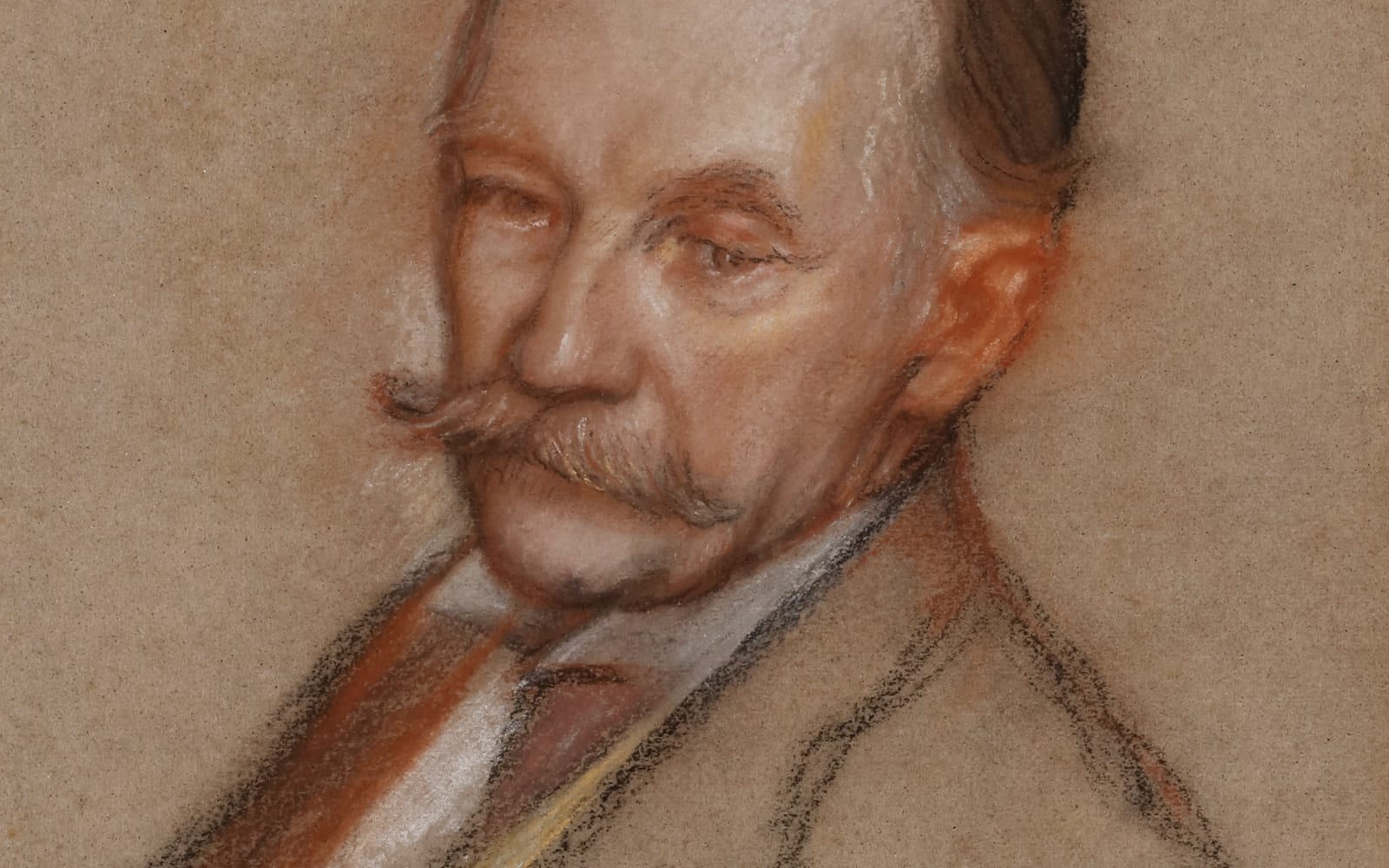
Philip Mould & Company were delighted to see a familiar face in Tate Britain's outstanding Aubrey Beardsley show. 'Aubrey Beardsley' is the largest exhibition dedicated to the artist in 50 years, and the Tate's exhibition space is instilled with an atmosphere of hushed Victorian debauchery, decadence and scandal. Governed by psychological realism, Aubrey's intense and prolific career is explored through his sinuous monochrome drawings.
However, it was that first painting in room 7 'Beardsley's Circle' where a recognisable figure stood proudly amongst the likes of William Rothenstein, Robert Ross and Max Beerbohm, Beardsley's close friends and contemporaries. The figure is that of Beardsley's elder sister, Mabel Beardsley, previously exhibited at Philip Mould & Company, as part of 'Power and Beauty: The Art of Sir Oswald Birley' (2017). This magnificent portrait depicts Mabel in a somewhat fanciful costume, supposedly worn by an Elizabethan page boy. Mabel began her career as an actress in London in 1884 and became known in the thespian world for her pioneering gender-blurring. She was an admirer of Elizabethan visual culture, its fascination with ciphers, riddles and esoteric symbols and adopted much of the fashion and costume of the period, disregarding typical feminine and masculine norms.
Mabel's personable and charming persona intrigued many individuals within Beardsley's circle, and she began to form her own group of writers, actors and artists. W.B. Yeats became so captivated with her, that he dedicated a sequence of poems to her. The following poem seems to beautifully relate to the someone fanciful portrait of her, hanging in the exhibition;
Her Courtesy
With the old kindness, the old distinguished grace,
She lies, her lovely piteous head amid dull red hair
Propped upon pillows, rouge on the pallor of her face.
She would not have us sad because she is lying there,
And when she meets our gaze her eyes are laughter-lit,
Her speech a wicked tale that we may vie with her,
Matching our broken-hearted wit against her wit,
Thinking of saints and of Petronius Arbiter.



